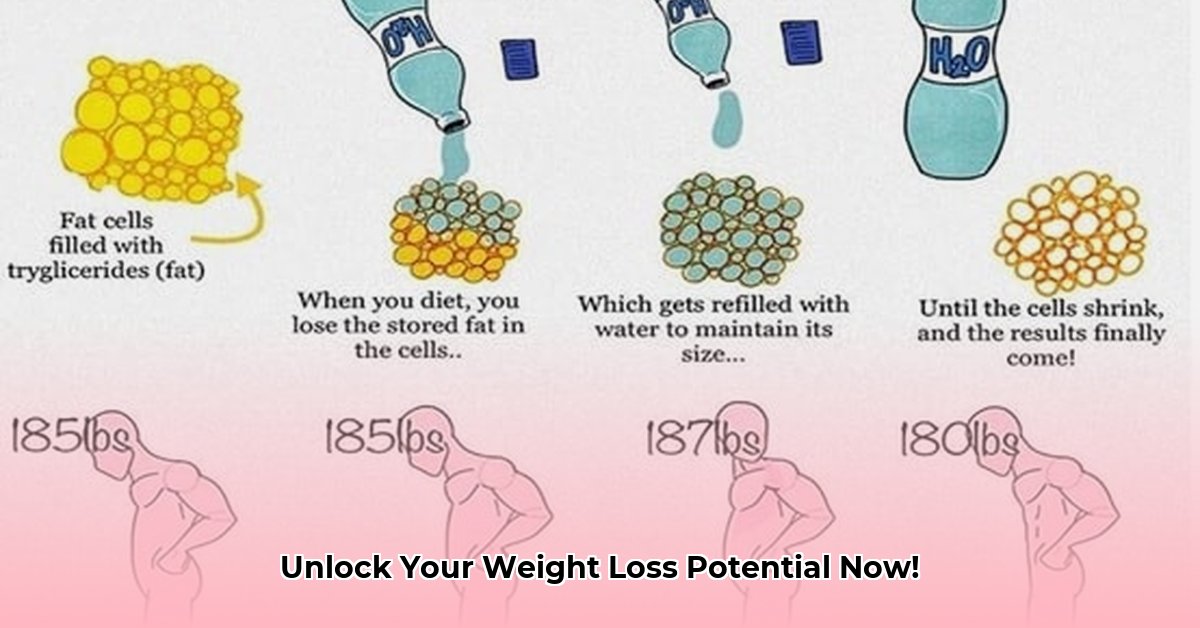
Embarking on a weight-loss journey is a transformative experience, often compared to climbing a mountain: initially exhilarating, then challenging, and ultimately, incredibly rewarding. Understanding the four typical stages of this journey can significantly smooth the path and increase your chances of long-term success. This isn't about quick fixes; it's about cultivating sustainable habits that support your overall health and well-being.
Stage 1: The Initial "Wow!" – Water Weight and Early Motivation
The beginning is often the most exciting. You'll likely see a significant drop in the numbers on the scale—a rapid initial weight loss. This is largely due to water weight loss and glycogen (stored carbohydrate) depletion; your body is releasing stored fluid and carbs. This initial rapid success is a fantastic motivator, giving you a powerful sense of accomplishment. However, it's crucial to remember that this rapid loss isn't sustainable; it's not all fat.
This initial burst of progress is fueled by enthusiasm and quick wins. This is the ideal time to build a strong foundation of healthy habits that will carry you through the journey. Don't be discouraged when the pace inevitably changes. Haven't you seen how fast initial weight loss can be? Remember to set realistic expectations to avoid disillusionment. This stage sets the stage for your long-term success; focus on establishing good habits, not just the number on the scale.
Stage 2: The Steady Pace – Real Fat Loss Begins
After the initial rapid weight loss, things naturally slow down. This is perfectly normal. Now you're entering the phase of actual body fat loss. This takes longer and demands more patience and consistent effort. There might be weeks where the scale barely budges, even though you’re working hard. Remember, this is where the true work begins. Don't lose heart; your body is changing.
What does sustainable weight loss look like? It's all about consistent healthy choices: nutritious meals rich in fruits, vegetables, and lean proteins; regular physical activity that you genuinely enjoy; and sufficient, restful sleep. This stage isn’t a sprint; it's a marathon. Focus on making sustainable changes that integrate smoothly into your life—not extreme diets or grueling workouts.
Finding enjoyable activities is key. Some people thrive on team sports; others prefer solo hikes or dancing. The goal is to make exercise a rewarding part of your lifestyle, not a dreaded chore. Remember this stage is about long-term habit forming, not short-term weight loss.
Stage 3: The Plateau – When Progress Seems to Halt
Nearly everyone experiences a weight-loss plateau. It's frustrating, but entirely predictable. Your body adapts to your routine, and your metabolism might adjust. Progress may—and often will—appear to completely stall. But this doesn't mean failure. Think of it as a recalibration point.
Instead of getting discouraged, take a step back and reassess your strategies. Are you truly adhering to your nutrition plan? Are you accurately tracking your food and drink intake? Perhaps you need to increase the intensity or variety of your workouts. Consider incorporating new exercises or adding resistance training to build muscle mass. This often helps boost metabolism.
Don't solely focus on the scale. Celebrate "non-scale victories"—improved sleep, increased energy, a better mood, or fitting into clothes more comfortably. These are all indicators that you're making progress, even if the numbers on the scale remain unchanged. Remember, consistency is key.
Stage 4: Maintaining Your Success – A Lifestyle, Not a Diet
Congratulations! You've reached your goal weight. Now comes the long-term strategy: maintaining your progress. This isn’t about reverting to old habits; it's about establishing a lifestyle that supports your health. This stage fully acknowledges that setbacks are possible; it's part of the process.
This final stage is about seamlessly integrating the healthy habits you’ve developed into your daily life. It's less about rigid rules and more about mindful choices. You'll find yourself naturally making informed decisions about food and physical activity. This doesn't mean you can never indulge; it means maintaining a healthy balance.
Expect occasional setbacks. Life throws curveballs—stress, travel, or illness can disrupt even the best intentions. The key is to view these as temporary blips, not as failures. Learn from them, adjust, and move forward. This is a marathon, not a sprint, and it’s a journey you need to commit to for life.
Actionable Steps for Each Stage:
| Stage | Actionable Tips |
|---|---|
| Rapid Weight Loss | Focus on building healthy habits; consistency is paramount. |
| Steady Weight Loss | Prioritize consistent exercise and balanced, nutritious meals; find enjoyable activities. |
| Plateau | Review your strategies; make small, sustainable adjustments; track progress beyond the scale. |
| Maintenance | Prioritize long-term healthy lifestyle changes; manage stress; plan for setbacks. |
Remember, weight loss is a highly personal journey. Celebrate your milestones, embrace the challenges, and remember that consistency is the cornerstone of success. If you need personalized guidance, consult a healthcare professional or registered dietitian. They can help you create a plan tailored to your specific needs and preferences.
How to Overcome Weight Loss Plateaus and Maintain Long-Term Weight Loss
Key Takeaways:
- Weight loss occurs in stages, each presenting unique challenges and rewards.
- Understanding these stages equips you to anticipate obstacles and stay motivated.
- Overcoming weight loss plateaus involves adjusting your approach, not giving up.
- Long-term success is built on sustainable lifestyle changes, not temporary fixes.